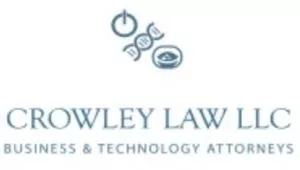- within Corporate/Commercial Law topic(s)
- with Senior Company Executives, HR and Finance and Tax Executives
- in India
- with readers working within the Banking & Credit, Healthcare and Law Firm industries
- within Corporate/Commercial Law topic(s)
- within Law Practice Management, Law Department Performance and Tax topic(s)
- with readers working within the Banking & Credit industries

When startup founders think about transfer restrictions that work in their favor, they usually focus on drag-along rights or rights of first refusal. And for good reason. In most company sales, it's the founders or majority stockholders initiating the deal, not tagging along. But just because you're not piggybacking doesn't mean tag-along rights don't affect you. When drafted poorly, they can be used against you, reshaping deal terms and even slowing the transaction.
Used properly, tag-along provisions, also called co-sale rights, can help protect minority stockholders without interfering unduly with your ability to sell or negotiate. But too often, they're overlooked until a minority stockholder decides to exercise them at the last minute, forcing you to include them in the deal at the same price and on the same terms.
In this article, we break down how tag-along rights work inside a stockholders' agreement and what to watch out for when drafting or negotiating investor protections with venture capital ("VC") firms, angel investors or private equity buyers.
What Are Tag-Along Rights and Where Are They Found?

Tag-along rights are contractual clauses baked into the stockholders' agreement that let minority stockholders participate in a private sale initiated by someone else. In most cases, that "someone else" is a majority stockholder looking to sell a portion of his or her stake. Tag-along rights give others the ability to sell their shares alongside the principal selling stockholder, on the same terms and for the same price, helping make sure they don't get left behind.
These rights show up in companies with a multi-class structure, where founders, angel investors and venture capital firms all hold different types of equity. You'll see them in early-stage startup deals where private transactions affect the cap table. In a public company, anyone can sell in the open market.
But in private firms, a founder selling 100% of his or her shares to an outside third party can reshape ownership, control and even the company's direction. That's why tag provisions exist to protect stockholders during off-market deals.
To understand how these rights work in real life, let's say you're a founder who's raised capital through multiple investment rounds. Your current ownership structure looks like this:
|
Stockholder |
Ownership % |
Class |
|
You (Founder) |
30% |
Common |
|
Co-founder |
10% |
Common |
|
Angel investor |
5% |
Common |
|
Series A VC |
30% |
Preferred |
|
Series B VC |
25% |
Preferred |
Now let's say a strategic buyer, maybe a pharma firm, offers to buy 20% of your personal shares for $5 million. This is a secondary sale, not a company sale. The buyer doesn't want more than 6% of the company. So you're offering 20% of your holdings or 6% of the total company's shares, at $4.17 per share.
But your stockholders' agreement has a clause that says:
"If any stockholder proposes to transfer more than 5% of the company's outstanding stock to a third-party buyer, all other stockholders have the right to participate on a pro rata basis."
That means your co-founder, angel investors and venture capital firms can each exercise their tag-along rights to sell a portion of the 6% stake you intended to sell yourself.
Here's how that plays out:
|
Stockholder |
Ownership % |
Pro Rata Tag-In on 6% Deal |
|
Angel investor |
5% |
0.3% |
|
Co-founder |
10% |
0.6% |
|
Series A VC |
30% |
1.8% |
|
Series B VC |
25% |
1.5% |
|
Total |
— |
4.2% |
So instead of you selling the full 6%, you're now only transferring 1.8% of your equity, keeping around $1.5 million instead of the full $5 million. The rest is divided among the existing stockholders who invoked their rights. You still close the deal. The buyer still pays for 6%. But those minority stockholders exercised their contractual ability to tag in.
What Are the Core Elements of Tag-Along Rights?

Like any tool, tag-along rights can help or hurt depending on how they're structured. Here are the core elements of the tag-along clause in a stockholders' agreement:
The Trigger Threshold
The trigger threshold is what sets tag-along rights in motion. It defines the type of sale that gives minority stockholders the right to participate. In many stockholders' agreements, this threshold is tied to the percentage of company shares being transferred.
The lower that number is, the more often these provisions get activated. And in a startup with multiple rounds of investment, that means even a founder's personal liquidity event, not just a full company exit, can open the door for other stockholders to tag in on a pro rata basis. Whether that's a good thing or a headache depends on the structure, the buyer and what kind of minority stockholders you've brought on board.
Types of Covered Transactions
If the agreement doesn't clearly outline the types of transactions that trigger tag-along rights, you're left guessing. And in the middle of a deal, that kind of ambiguity is a fast track to conflict.
Here are the most common transaction types that trigger tag-along participation by minority stockholders:
- Voluntary sales to a third party
This is the most common scenario. A majority stockholder decides to sell a portion of his or her equity to an outside third party — typically for liquidity or strategic alignment. If the amount being sold crosses the trigger threshold, the tag-along clause may give minority stockholders the right to join the deal on a pro rata basis, selling their shares on the same terms and for the same price.
- Involuntary transfers
While less frequent, these matter, especially in succession planning. An involuntary transfer happens when a founder or investor's equity is passed due to events like divorce, death or bankruptcy. Some private firms choose to include these in their tag-along coverage to prevent unknown parties from unexpectedly appearing on the cap table. If your goal is to protect stockholders, this clause becomes part of the safety net that guards your long-term ownership profile.
- Secondary sales
A secondary sale occurs when an existing stockholder, like a founder, angel investor or VC firm, sells their shares directly to a new investor, such as a private equity fund or a strategic buyer. These deals are often private, negotiated directly and structured for liquidity, not capital raising.
Participation Mechanics
The next critical element is this: who gets to participate in the sale? The scope of participation determines whether a small, clean transaction stays small or balloons into something messy. Participation rights are typically structured in one of four ways:
- All common stockholders
This is the broadest participation scope and it means anyone holding common stock has the right to tag along. As a founder or majority stockholder trying to sell a portion of your equity, this can become a real problem. A broad tag-along pool invites smaller investors to step into the deal, many of whom the buyer never asked for. That creates friction, slows things down and in some cases, can scare off potential buyers altogether.
- Only preferred investors
In this setup, only holders of preferred stock get the right to sell their shares alongside the initiating stockholder. As a founder, you may find that you're excluded from tagging into their exit but still obligated to let them tag into yours.
- A named group of specific stockholders
This is the cleanest structure. The tag-along clause names specific investors who hold tag-along rights.
How Much Can They Sell? The Pro Rata Basis
Once a stockholders' agreement spells out who gets to participate, the next question is how much they're actually allowed to sell. This is where the pro rata basis comes in. Pro rata simply means "in proportion to." Under tag-along rights, minority stockholders sell only the fraction of the stake being transferred that matches their ownership percentage in the company.
Take the example we worked through earlier. If a majority stockholder decides to sell 6% of the company's shares, minority stockholders' ability to tag along is capped by their equity. An angel investor holding 5% can only sell 5% of that 6% or 0.3% of the company. A co-founder with 10% ownership gets to sell 10% of the 6%, which comes out to 0.6%. Larger players, like venture capital firms, scale the same way: a Series A fund with 30% ownership tags in for 1.8%, while a Series B fund with 25% gets 1.5%. Together, those existing stockholders absorb 4.2% of the deal, leaving the founder with just 1.8% to transfer.
Price and Terms Equality
The price and terms equality clause in tag-along rights helps make sure that every tagging stockholder gets the same opportunity, at the same price and on the same terms as the stockholder leading the sale.
This clause levels the playing field. Whether it's a founder, an early angel investor or a venture capital firm tagging along, no one gets better or worse economics. If the majority stockholder decides to sell and the tag-along clause applies, then anyone exercising their rights must accept the exact deal structure that was offered.
So if the buyer proposes a deal like this:
- 50% paid in cash upfront
- The other 50% paid in 12 months, contingent on a milestone
- Closing in 45 days
- Signing required reps and warranties covering IP ownership, regulatory compliance and employment matters
Then every minority stockholder who chooses to tag along must agree to those same conditions. They can't ask for full cash upfront. They can't demand a different payment schedule or push for an earlier closing date. They also can't skip the representations and warranties. The tag-along rights clause forces identical treatment across all tagging participants.
That might seem fair on the surface, and in many ways, it is. It's one of the ways these provisions are designed to protect minority stockholders from being forced into less favorable liquidity options during private company sales. But from a founder's standpoint, this clause can quietly reshape negotiations, especially when the buyer has structured the offer around you, not the other stockholders.
Notice Requirements
None of the elements we've covered so far matter if minority stockholders aren't properly notified of a triggering sale. Without clear notice, a stockholder may be excluded unintentionally and that opens the door to claims of breach. A lawsuit, even from a small holder, can delay or derail the deal entirely. That's why a well-drafted stockholders' agreement includes detailed notice requirements that define:
- Who must be notified: This typically includes every stockholder with tag-along rights, designated representatives of venture capital firms and, in some cases, other parties named in the agreement.
- How notice is delivered: Email, certified mail or postings in a secure data room are common. The method matters because disputes often hinge on whether notice was validly sent.
- When notice must be sent: Most agreements give minority stockholders 10–20 days before closing to review the proposed sale, consult advisors and decide if they will sell their shares.
- What the notice must include: Price per share, the buyer's identity, payment terms and the deadline to respond. Without this information, minority stockholders lack the ability to make an informed decision.
When handled correctly, notice acts as a safety net. It helps make sure every party entitled to participate has the chance to do so while giving the majority stockholders and the buyer confidence that the deal won't later be challenged.
When Tag-Along Rights Can Help Founders

When structured thoughtfully, tag-along rights can support the long-term interests of founders. In the right deals, they align your investors' expectations with your own, smooth negotiations with potential buyers and strengthen your leverage in liquidity events.
Here are some of the key ways tag-along provisions can work in a founder's favor:
They Facilitate Equal Access to Liquidity
If you've been through multiple rounds and now hold just 10% of the company's shares, chances are you're sitting on common stock with little say in what the majority stockholders do next. If a private equity buyer approaches them with an offer, they don't have to ask for your input.
But if your stockholders' agreement includes tag-along rights, that deal becomes your deal too. You can sell your shares alongside them, at the same price and under the same terms, even if you weren't at the table. For minority stockholders in a tag-along rights startup, this is often the only path to liquidity in an otherwise locked-up cap table.
They Protect Against Dilution of Influence
Your influence in a venture-backed company is tied directly to your equity, your voting rights and your relationships with the other people who control votes. But if your stockholders' agreement lacks tag-along rights, a majority stockholder can sell a large stake to a private equity firm or strategic buyer that isn't aligned with your goals. Suddenly, there's a new player on the cap table, one you didn't pick, who may start pushing for board seats or demanding changes you never agreed to. And you're left watching from the sidelines while the shape of your company shifts.
With a well-drafted tag-along clause, you don't just watch. You act. You can exercise your rights, sell your pro rata portion and reduce the buyer's footprint or use your participation to negotiate more balanced terms. This is one of the few ways founders can retain influence without holding a majority stake. It keeps the cap table from becoming a liability and helps make sure that any deal impacting control must account for your presence.
They Facilitate Price Protection for Minority Stockholders
In many secondary transactions, the deal is quietly split in two. Preferred stockholders, like your Series A or B investors, negotiate a premium rate. Founders and other common stockholders, meanwhile, are offered far less or excluded altogether.
But if your stockholders' agreement includes a well-drafted tag-along clause with price protection language, you're a participant. That clause forces the buyer to offer you the same price, under the same terms and on the same schedule. The language does the heavy lifting. It requires that every stockholder tagging into the deal receive identical economics.
When Tag-Along Rights Work Against Founders

When they're structured the wrong way, tag-along rights can quietly erode your control over your own startup and even compromise negotiations. Let's look at how.
Tag-Along Rights Can Turn Your Earnout Into a Payout for Everyone Else
You built the company from scratch. After years of fundraising and product grind, a strategic buyer shows up. They're not buying the company, just 15% of your personal stake. You negotiate carefully: a portion now and more later if the company hits certain milestones like revenue thresholds or product adoption goals. That back-end compensation is called an earnout and you agree to stay on post-sale to help the company cross the finish line.
But if your stockholders' agreement says tagging parties must get the same terms, including contingent or deferred payments, your upside just became a group benefit. Minority stockholders can sell their shares in the same deal and receive the same price structure, including the earnout. They didn't help negotiate. They're not accountable for the targets. And they're not sticking around after the close. Still, they collect a portion of the compensation tied to your continued performance.
This shifts hard-earned value from the founder to existing stockholders who bring nothing to the post-sale effort. What looks like a tool designed to protect minority stockholders ends up diluting your incentive and flattening outcomes across parties with very different roles in the deal.
Too Many Tag-Alongs Can Kill Your Deal Before It Closes
As your startup grows through each investment round, your cap table naturally expands. Between angel investors, venture capital firms and advisory shares, most tag-along rights startups end up with dozens of minority stockholders, each holding a small slice of equity.
Then a deal comes along. A private equity buyer wants to acquire 10% of your personal stake, not the company's shares, just yours. It aligns with your long-term goals and gives you short-term liquidity. But if your stockholders' agreement allows any eligible stockholder to tag in on a pro rata basis, your clean secondary starts to unravel.
Here's what happens. A stockholder with 4% equity gets to sell 4% of your 10%, just 0.4%, but it chips away at your allocation. Another with 6% equity gets to tag along for 0.6%. Each one dilutes your sale, leaving you with less ownership sold and less cash than you expected. The more minority stockholders eligible to tag, the more your participation shrinks.
For the buyer, the economics stay the same. But the complexity explodes. What was once a one-party deal is now a spreadsheet of counterparties. Every stockholder must be notified during the notice period, given time to decide, receive the deal documents and be formally added to the purchase agreement on the same terms. At best, that slows things down. At worst, it kills the momentum entirely. If you're not careful, your own tag-along rights clause can turn a simple transaction into a logistical nightmare.
How Crowley Law LLC Can Help
At Crowley Law LLC, we help founders of life sciences and other technology companies protect their equity, control and timing at every stage, from garage to marketplace. With over three decades of experience advising on investor-backed transactions, we know how to structure tag-along rights to support your growth, not quietly undermine it.
- Clause review and risk assessment
We analyze your existing tag-along rights to identify deal-killing triggers, overly broad participation pools, earnout exposure and voting structures that could let venture capital firms force minority stockholders to sell without your consent.
- Drafting preventive clauses in stockholders' agreements
When you're raising capital, we help you draft smart tag-along provisions — balancing protection for minority stockholders with language that preserves founder flexibility during secondary sales and future liquidity events.
- Negotiation support in secondary sales
If you're planning to sell your personal shares, we work alongside you and the buyer to help avoid a transaction collapsing under operational weight. That includes managing the pro rata basis mechanics and aligning participation rights across all counterparties.
- Exit planning and contingent risk mitigation
For founders approaching a company sale, we help negotiate payment terms and tag provisions that protect your earnouts, avoid forced inclusion under the same terms and preserve strategic control over how and when other stockholders sell their shares.
Call 908-738-9398 for tailored tag-along rights counsel for your life sciences or technology startup.
FAQs
Can I Remove or Limit Tag-Along Rights After They've Already Been Signed Into Our Stockholders' Agreement?
Yes, but you'll need approval from the parties who hold those rights, typically venture capital firms or early investors. We help founders assess which clauses are renegotiable and how to structure amendments that align incentives without opening up the entire agreement.
If I Sell a Small Portion of My Stake, Do I Have to Offer the Same Opportunity Every Time?
That depends on how the tag-along trigger is drafted. Some clauses activate with any transfer over a specific percentage. Others apply only to significant secondary transactions. We review your agreement and work with you to model different scenarios before you move forward.
Can Tag-Along Rights Block a Sale Even if I'm Not Giving up Control of the Company?
They can delay or complicate it. While tag-along rights don't technically block sales, they can trigger logistical and legal delays, especially if many minority stockholders need to be notified, respond and sign on. We help streamline the participation process or negotiate carve-outs.
How Do Tag-Along Rights Interact With Drag-Along Rights in a Full Company Sale?
In most company sales, drag-along rights override tag-along rights. But poorly coordinated clauses can create conflicts, especially if different classes of stockholders have different tag terms. We align these provisions during drafting and resolve conflicts ahead of a future sale.
I'm Negotiating an Earnout. Can Tag-Along Rights Force Me to Share It With Others?
If the clause says tag-along sales must happen on the "same terms," then yes, earnouts, escrows and even deferred payments may have to be shared. We help founders draft protections that separate performance-based payouts from passive stockholder participation.
The content of this article is intended to provide a general guide to the subject matter. Specialist advice should be sought about your specific circumstances.


